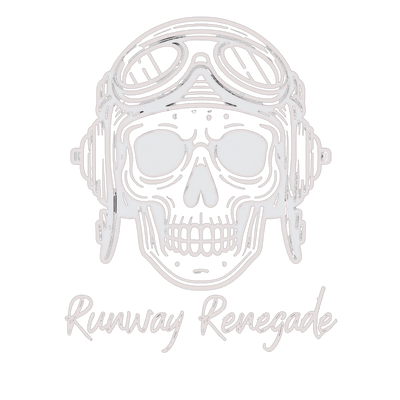Callsigns and Cockpit Culture: The Stories Behind the Names
If you’ve ever met a military aviator, you’ve probably noticed something odd—none of them go by their actual names. Instead, they’ve got callsigns, and they’re usually way more interesting than whatever their parents picked out at birth. But unlike Hollywood’s “Maverick” and “Iceman” nonsense, real-life callsigns aren’t about looking cool. They’re about one thing: public humiliation.
How It All Started: Blame the Fighter Pilots
The tradition of callsigns dates back to World War I and II when pilots needed short, distinct names for radio communication. Back then, it was about clarity—“Red Leader” was a hell of a lot easier to say (and understand) than “Lieutenant Colonel Smith-Jones III” while dodging enemy fire. But somewhere along the way, fighter pilots got bored (or drunk) and decided callsigns should also double as a lifetime reminder of someone’s dumbest mistake.
Now, every pilot gets a callsign, and more often than not, it’s less “badass” and more “you’ll never live this down.”
Earning (or Suffering) Your Callsign
Here’s how it works:
-
You Screw Up – Maybe you say something idiotic on the radio. Maybe you botch a landing so badly it gets written into squadron lore. Maybe your last name is just too easy to make fun of. Either way, the moment you give the squadron any material, your fate is sealed.
-
The Naming Ceremony – At some point—usually after proving you won’t actually kill yourself in the jet—the squadron gets together to officially bless you with a callsign. This event is not a democracy. You don’t get to choose your own name. Instead, the senior pilots (and sometimes the entire squadron) throw out suggestions until they land on something that will haunt you forever.
-
Acceptance (or Defeat) – Once your callsign is locked in, that’s it. You can try to fight it, but resistance just makes it stick harder. The only way to shake a bad callsign is to do something even dumber—and trust me, that’s not a great solution.
The Art of a Perfect Callsign
A proper callsign follows a few basic rules:
- It must be brutally honest. If you blacked out in the centrifuge, get ready for something like “Nappy.” If you confused left and right on your first flight? Congratulations, you’re now “Wrongway.”
- It should be at least mildly inappropriate. If it wouldn’t make HR nervous in the civilian world, it’s probably too tame.
- It needs to be unforgettable. A good callsign sticks. If your squadron is still laughing about it years later, mission accomplished.
The Best (and Worst) Callsigns Ever
There are some absolute legends in the world of callsigns, ranging from the hilarious to the downright unfortunate:
- “Bam Bam” – For the guy who accidentally punched his own canopy release.
- “Tuna” – Because he forgot to pressurize his jet and nearly passed out due to lack of oxygen.
- “SLOJ” – Stupidest Lieutenant on the Jet. Enough said.
- “Snacks” – After someone caught him sneaking an absurd amount of food into the cockpit.
- “FOD” – Stands for Foreign Object Debris—given to the pilot who dropped his helmet on the runway, causing an aircraft delay.
And then there are the poor souls who just got wrecked by their own last names. If your last name is Cox, Wood, or Johnson… yeah, it’s going to be a long career.
Hollywood vs. Reality: No One Gets “Maverick”
Movies make callsigns look way cooler than they actually are. In real life, nobody rolls into a squadron and gets something as slick as “Ghost” or “Viper.” If someone does have a cool callsign, you can bet there’s a deeply embarrassing backstory behind it.
For example, let’s say someone’s callsign is “Thor.” Sounds badass, right? Well, chances are it’s because he once tripped over his own feet and smashed his head on a briefing room table. Every “cool” callsign has a tragic origin. That’s just how it works.
Embrace the Shame: It’s All About Brotherhood
At the end of the day, callsigns are about more than just roasting each other. They build camaraderie, break down egos, and create a sense of belonging. When you get your callsign, it means you’re officially part of the squadron. It’s a rite of passage, a badge of honor, and a lifetime reminder that no matter how good you get, your worst moment will always follow you.
So if you’re ever around military pilots and hear someone get called “Butter” (because they botched their first landing so bad they spread it all over the runway), just know—there’s a story there. And it’s probably hilarious.








